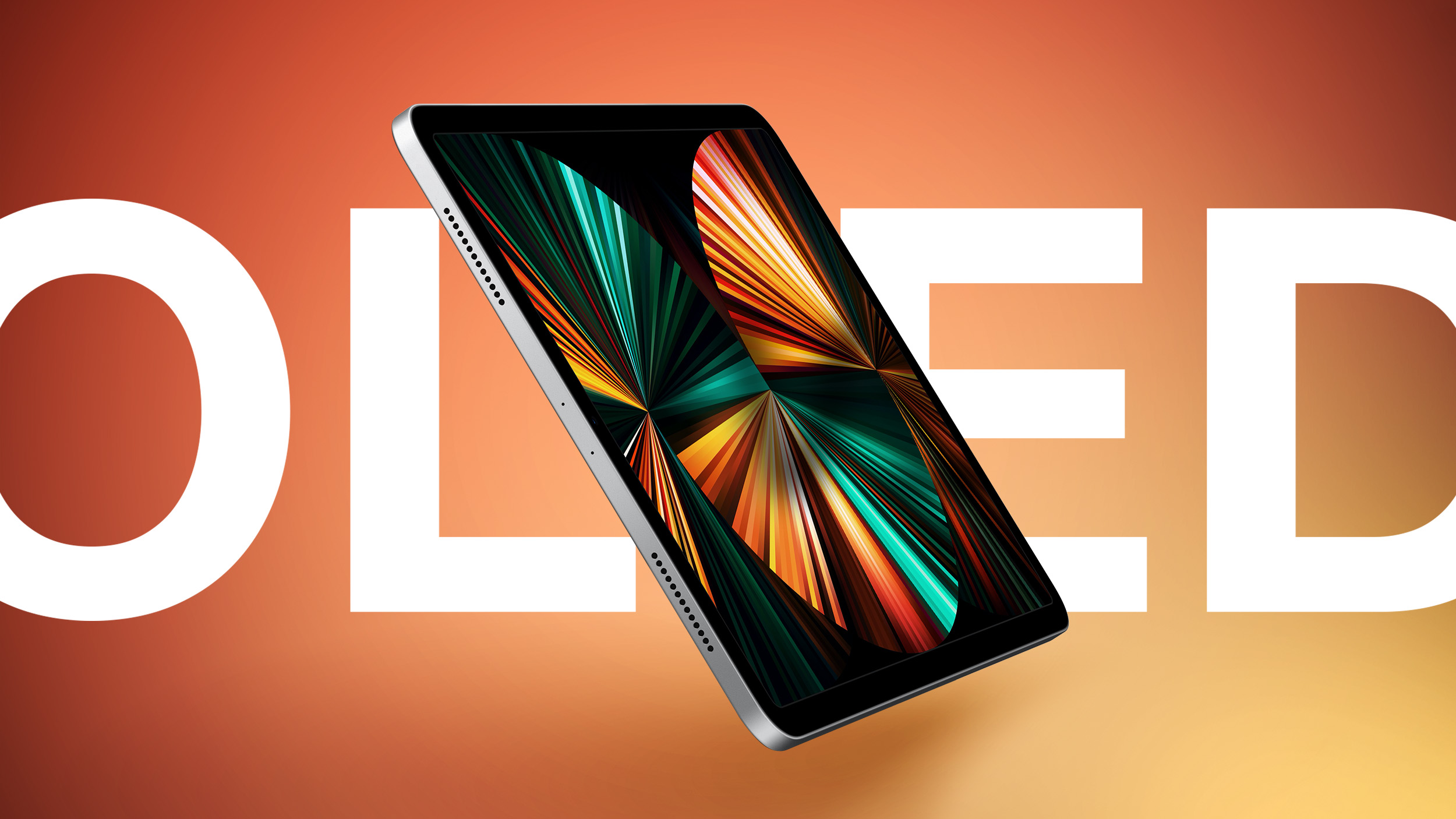OLED displays for both of Apple's next-generation iPad Pro models will have entered the production phase by this week in time for device shipments to begin in April, claims a new report by The Elec.

According to the Korean-language outlet, LG Display recently began manufacturing the thin film transistor (TFT) for the new 13-inch iPad Pro displays, while Samsung will this week similarly kickstart its own TFT production for the new 11-inch iPad Pro. The TFT essentially acts as a switch to turn off and turn on individual OLED pixels.
Finished 11-inch and 13-inch OLED iPad Pro models are expected to go into mass production around March, in time for a scheduled release in April, according to today's report. Apple analyst Ming-Chi Kuo has said he expects the new iPad Pro models to launch in the second quarter of 2024, which runs from April to June.
The timeframe given by The Elec also dovetails with an earlier Bloomberg report that claimed the new iPad Pro models could be announced at a March event, along with a new iPad Air that will be available in two sizes for the first time. Apple usually opens pre-orders during an event or a week or two after it, and then begins delivering the devices to customers the following week.
OLED displays are a first for the iPad lineup. Apple has been using OLED technology for the iPhone and the Apple Watch, but larger OLED screens are more expensive. Compared to LED or mini-LED, OLED brings deeper blacks and more vivid colors.
Apple's OLED iPad Pro shipments forecast for the year have reportedly decreased to 8 million units, down from the 10 million units that were projected for 2024 last year. The reduction is said to be a reflection of broadly sluggish performance across Apple's product lineup. Apple did not release any new iPad models last year, so it will be interesting to see if pent-up demand can offset poor sales.
Along with new displays, the iPad Pro models are expected to be powered by Apple's latest M3 chip, which debuted in new MacBook Pro models last year. The M3 is built on 3-nanometer technology, and should bring a notable graphics improvement over the M2 chip that is currently used in the iPad Pro.
The displays are expected to be three times the price of those used in iPhones, which could translate to much higher prices for customers. Apple is also rumored to be releasing a redesigned Magic Keyboard accessory for the devices, since the screens will be slightly larger and the tablets themselves could be slightly thinner.
This article, "OLED iPad Pro Displays Now in Production, Devices to Ship in April" first appeared on MacRumors.com
Discuss this article in our forums
Source: TechRadar

According to the Korean-language outlet, LG Display recently began manufacturing the thin film transistor (TFT) for the new 13-inch iPad Pro displays, while Samsung will this week similarly kickstart its own TFT production for the new 11-inch iPad Pro. The TFT essentially acts as a switch to turn off and turn on individual OLED pixels.
Finished 11-inch and 13-inch OLED iPad Pro models are expected to go into mass production around March, in time for a scheduled release in April, according to today's report. Apple analyst Ming-Chi Kuo has said he expects the new iPad Pro models to launch in the second quarter of 2024, which runs from April to June.
The timeframe given by The Elec also dovetails with an earlier Bloomberg report that claimed the new iPad Pro models could be announced at a March event, along with a new iPad Air that will be available in two sizes for the first time. Apple usually opens pre-orders during an event or a week or two after it, and then begins delivering the devices to customers the following week.
OLED displays are a first for the iPad lineup. Apple has been using OLED technology for the iPhone and the Apple Watch, but larger OLED screens are more expensive. Compared to LED or mini-LED, OLED brings deeper blacks and more vivid colors.
Apple's OLED iPad Pro shipments forecast for the year have reportedly decreased to 8 million units, down from the 10 million units that were projected for 2024 last year. The reduction is said to be a reflection of broadly sluggish performance across Apple's product lineup. Apple did not release any new iPad models last year, so it will be interesting to see if pent-up demand can offset poor sales.
Along with new displays, the iPad Pro models are expected to be powered by Apple's latest M3 chip, which debuted in new MacBook Pro models last year. The M3 is built on 3-nanometer technology, and should bring a notable graphics improvement over the M2 chip that is currently used in the iPad Pro.
The displays are expected to be three times the price of those used in iPhones, which could translate to much higher prices for customers. Apple is also rumored to be releasing a redesigned Magic Keyboard accessory for the devices, since the screens will be slightly larger and the tablets themselves could be slightly thinner.
Related Roundup: iPad Pro
Tags: The Elec, OLED iPad Pro
Buyer's Guide: 11" iPad Pro (Don't Buy), 12.9" iPad Pro (Don't Buy)
Related Forum: iPad
This article, "OLED iPad Pro Displays Now in Production, Devices to Ship in April" first appeared on MacRumors.com
Discuss this article in our forums
Source: TechRadar